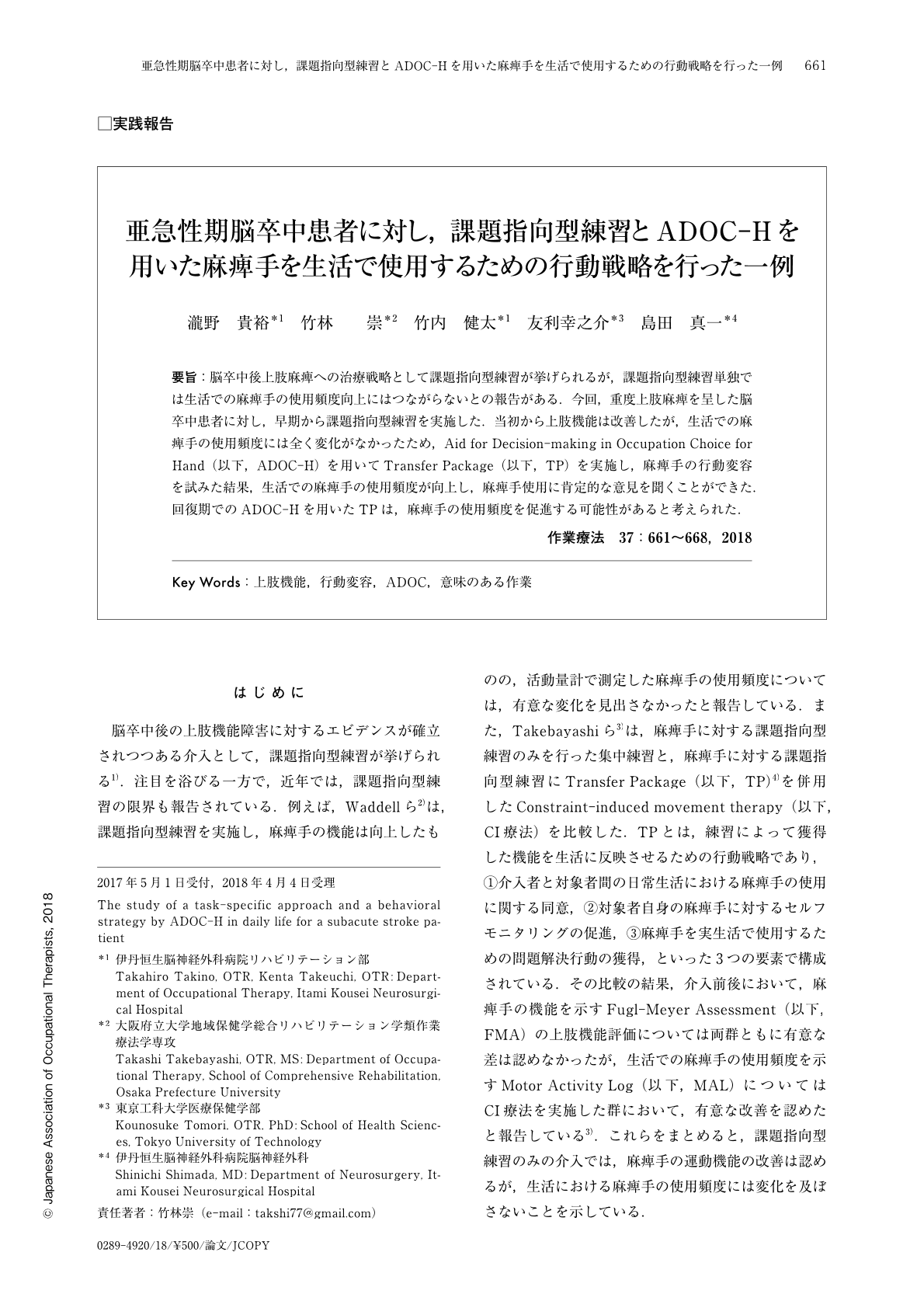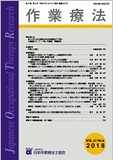Japanese
English
- 販売していません
- Abstract 文献概要
- 1ページ目 Look Inside
- 参考文献 Reference
- サイト内被引用 Cited by
要旨:脳卒中後上肢麻痺への治療戦略として課題指向型練習が挙げられるが,課題指向型練習単独では生活での麻痺手の使用頻度向上にはつながらないとの報告がある.今回,重度上肢麻痺を呈した脳卒中患者に対し,早期から課題指向型練習を実施した.当初から上肢機能は改善したが,生活での麻痺手の使用頻度には全く変化がなかったため,Aid for Decision-making in Occupation Choice for Hand(以下,ADOC-H)を用いてTransfer Package(以下,TP)を実施し,麻痺手の行動変容を試みた結果,生活での麻痺手の使用頻度が向上し,麻痺手使用に肯定的な意見を聞くことができた.回復期でのADOC-Hを用いたTPは,麻痺手の使用頻度を促進する可能性があると考えられた.
Task-specific training is the most empirically supported approach to rehabilitation of upper limb paralysis after stroke. However, it has been reported that task-specific training alone cannot lead to improved frequency of use of the paralyzed hand in daily life. This study provided early task-specific training for a stroke patient with severe upper limb paralysis to improve her upper extremity function. Upon beginning the task-specific training, upper limb function improved. However, the training did not improve upper limb performance in daily life. Thus, we implemented Transfer Package using Aid for Decision-making in Occupation Choice for Hand (ADOC-H) and attempted to change the function of the paralyzed hand. As a result, frequency of use of the paralyzed hand in ADL improved, and the patient expressed positive opinions on the use of the paralyzed hand. Transfer package using ADOC-H can promote the frequency of use of a paralyzed hand.

Copyright © 2018, Japanese Association of Occupational Therapists. All rights reserved.


